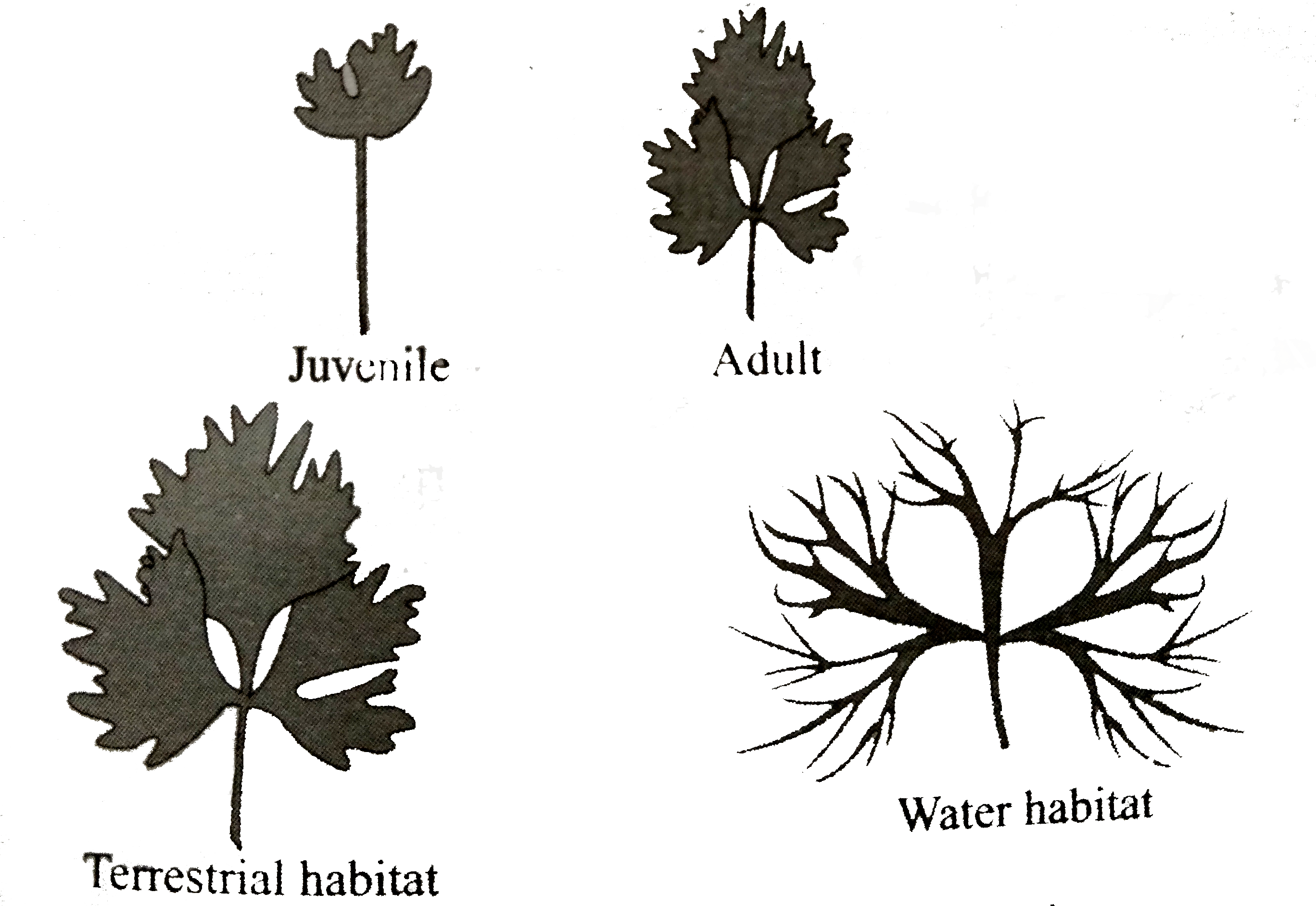Plants follow different pathways in response to environmental or phases of life to form different kinds of structures.This ability is called:
Plasticity
Maturity
Elasticity
Flexibility
To solve the question, we need to identify the term that describes the ability of plants to follow different pathways in response to environmental changes or different phases of life, leading to the formation of various structures. Here’s a step-by-step breakdown of the solution:
Step 1: Understand the Question
The question asks about the ability of plants to adapt their structures in response to environmental factors or life stages. This involves recognizing that plants can exhibit different morphological traits.
Hint: Think about how plants can change their appearance based on their environment or developmental stage.
Step 2: Identify Key Terms
The key terms in the question are "different pathways," "environmental," "phases of life," and "different kinds of structures." These suggest a dynamic process where plants can alter their physical characteristics.
Hint: Consider terms that relate to adaptability and change in morphology.
Step 3: Analyze the Options
The video transcript mentions that this ability is referred to as "Phenotypic." It also discusses how plants exhibit different morphologies, such as varying leaf shapes, which is a clear indication of phenotypic plasticity.
Hint: Look for terms that describe the observable traits of an organism that can change in response to different conditions.
Step 4: Consider Other Terms
The transcript also mentions terms like "Maturity," "Elasticity," and "Flexibility." However, these terms do not specifically address the ability to change structures based on environmental factors. Maturity refers to growth over time, while elasticity and flexibility relate to the physical properties of the plant.
Hint: Eliminate options that do not directly relate to the ability to change morphology.
Step 5: Conclusion
Based on the analysis, the correct answer to the question is "Phenotypic." This term encompasses the concept of phenotypic plasticity, where plants can exhibit different forms or structures in response to varying environmental conditions or developmental stages.
Final Answer: The ability of plants to follow different pathways in response to environmental or phases of life to form different kinds of structures is called Phenotypic.
The question asks about the ability of plants to adapt their structures in response to environmental factors or life stages. This involves recognizing that plants can exhibit different morphological traits.
The key terms in the question are "different pathways," "environmental," "phases of life," and "different kinds of structures." These suggest a dynamic process where plants can alter their physical characteristics.
The video transcript mentions that this ability is referred to as "Phenotypic." It also discusses how plants exhibit different morphologies, such as varying leaf shapes, which is a clear indication of phenotypic plasticity.
The transcript also mentions terms like "Maturity," "Elasticity," and "Flexibility." However, these terms do not specifically address the ability to change structures based on environmental factors. Maturity refers to growth over time, while elasticity and flexibility relate to the physical properties of the plant.
Based on the analysis, the correct answer to the question is "Phenotypic." This term encompasses the concept of phenotypic plasticity, where plants can exhibit different forms or structures in response to varying environmental conditions or developmental stages.
Topper's Solved these Questions
Similar Questions
Different allotropuc forms of sulphur differ in crystalline structure.
View SolutionThe study the following :
A) Formation of tracheary elements from the derivatives of cambium
B) Formation of interfascicular cambium and cork cambium from living permanent parenchyma cells.
C) Formation of secondary vascular tissues or cork and secondary cortex from the derivatives of lateral meristems .
D) The ability of plants to follow different pathways in response to the environment or phases of life to form different kinds of structures.
A, B, C and D respectively are
View Solution
Knowledge Check
Plants follow different pathways in response to environment or phases of life to form different kind of structures. This ability is called
ADevelopmentBDifferentiationCPlasticityDPhotoperiodismAssertion :- Buttercup produces two different kind of leaves within the same plant body.
Reason:- Plants follow different pathways in response to environment or phases of life to form different kinds of structures, due to plasticity.AIf both assertion and reason are true and reason is the correct explanation of assertion.BIf both assertion and reason are true but reason is not the correct explanation of assertion.CIf assertion is true but reason is false.DIf both assertion and reason are false.Go through the following statements
(i) In geometr,ic growth, following mitotic cell division, only one daughter cell con- tinues to divide while the other differen- tiates and mature.
(ii) The ability of plants to follow different pathways in response to environment or phases of life to to.rm different kinds of structures, is called plasticity.
(iii) The mathematical expression for arith- metic growth is Lt=L0+rt while for geo- metric growth, it is W1=W0=W0ert
(iv) The form of growth wherein new cells are always being added to the plant body by the activity of the meristem, is called the open form of growth.
Which of these are correct .A(iii) & (iv)B(ii), (iii) & (iv)C(ii) & (iv)DAll are correct
The ability of plant to follow different pathways and produce different structures in response to environment and phases of life is termed as -
View SolutionThe response of different organisms to environmental rhythms of light and darkness is called:
View SolutionDifferent kinds of structures develop in plants in different phase of growth or in response to enviornment. This ability is called_____.

View SolutionThe polymer formed with different monosaccharide is called as
View SolutionCompound with same molecular formula but different structure formula are called:
View Solution
